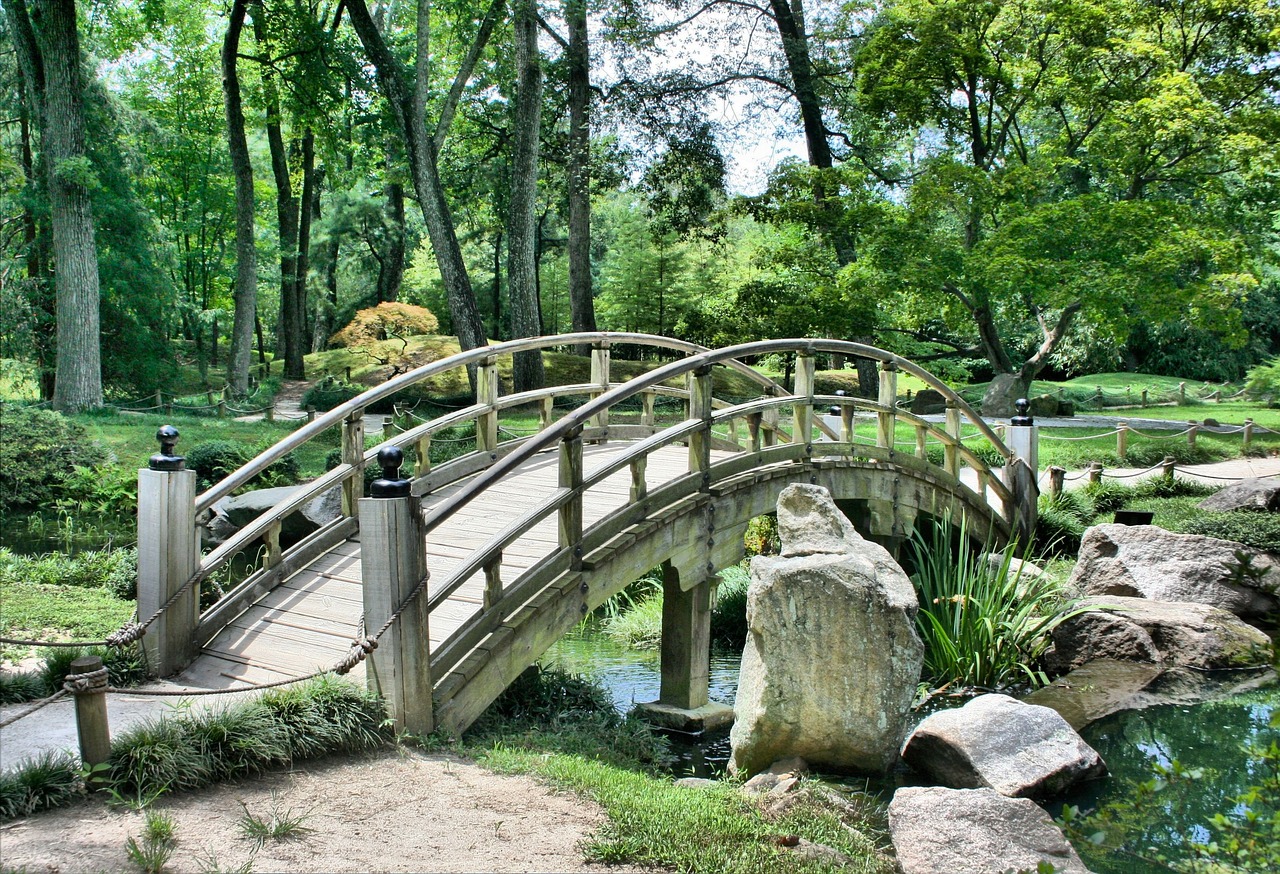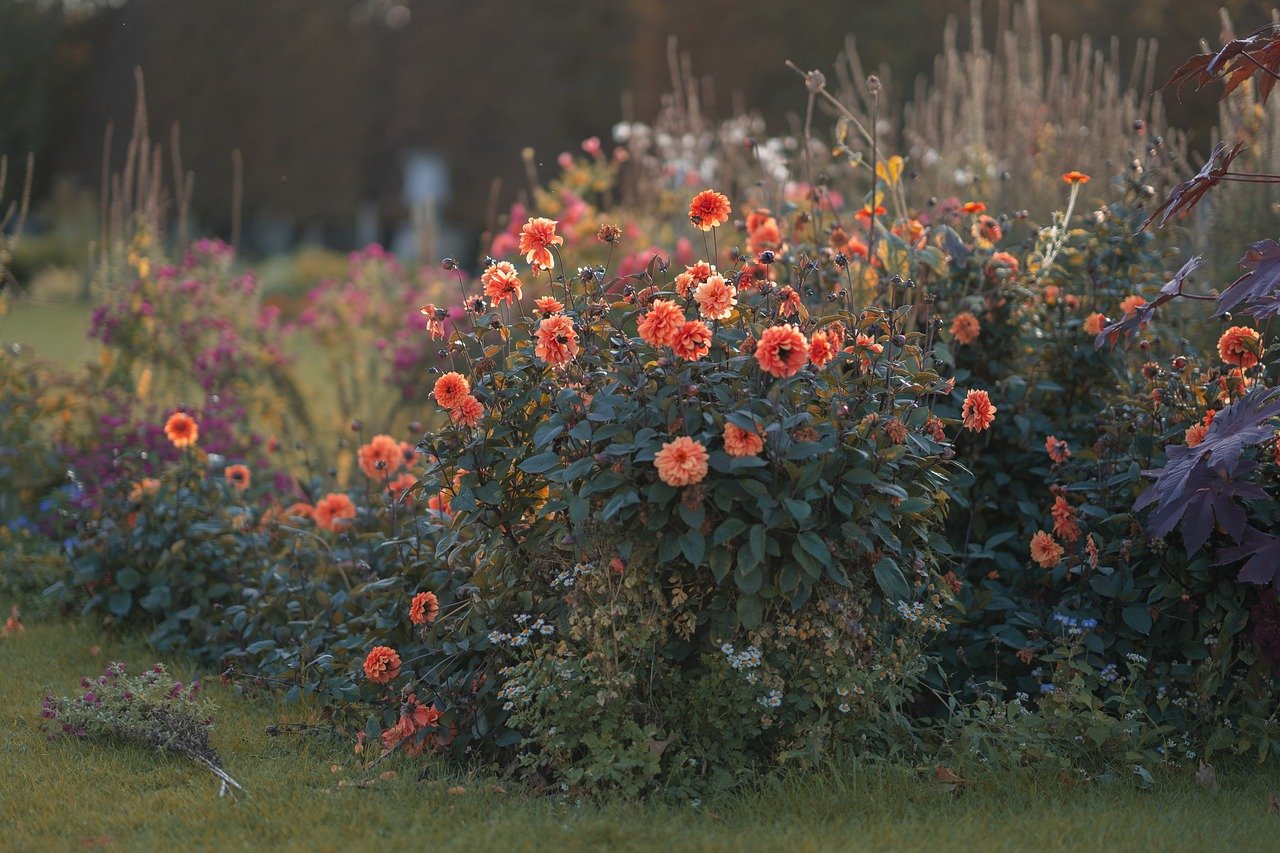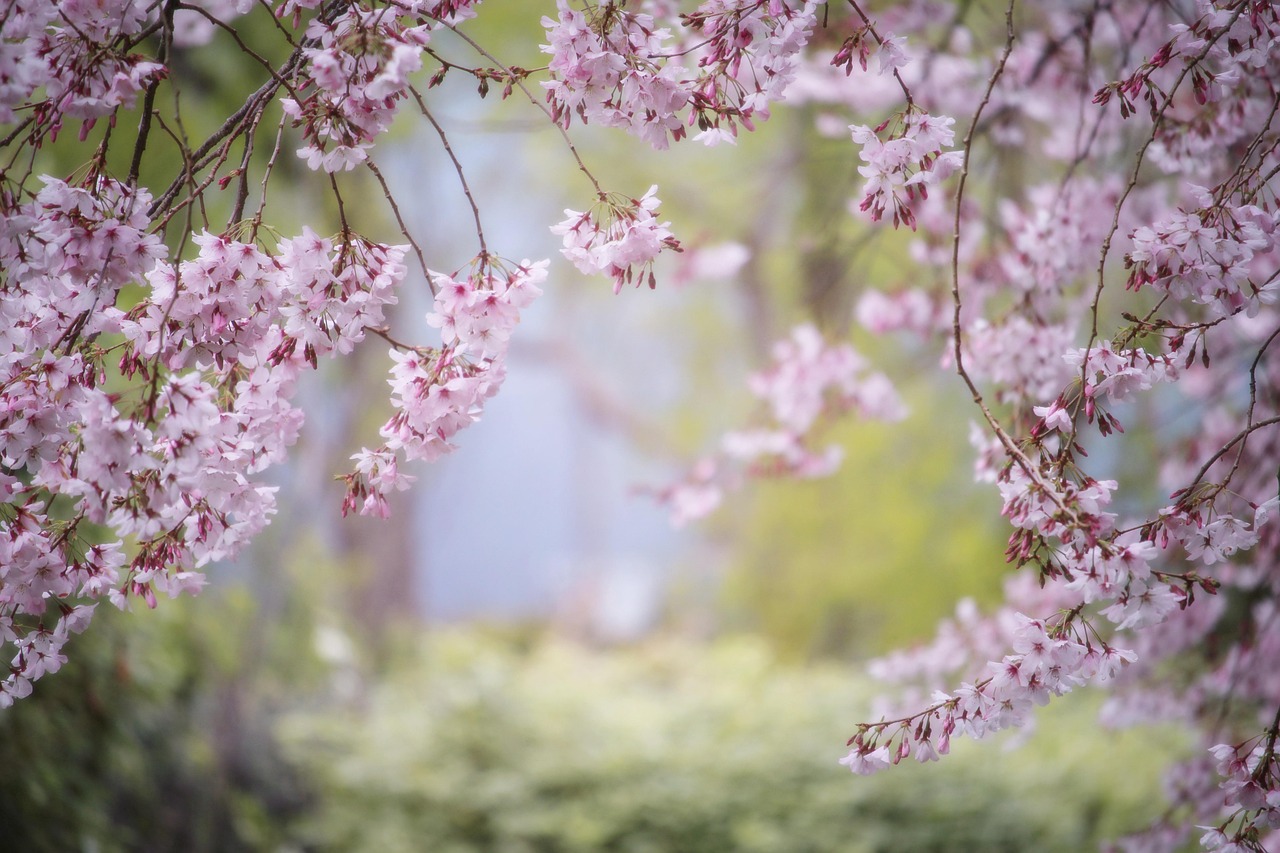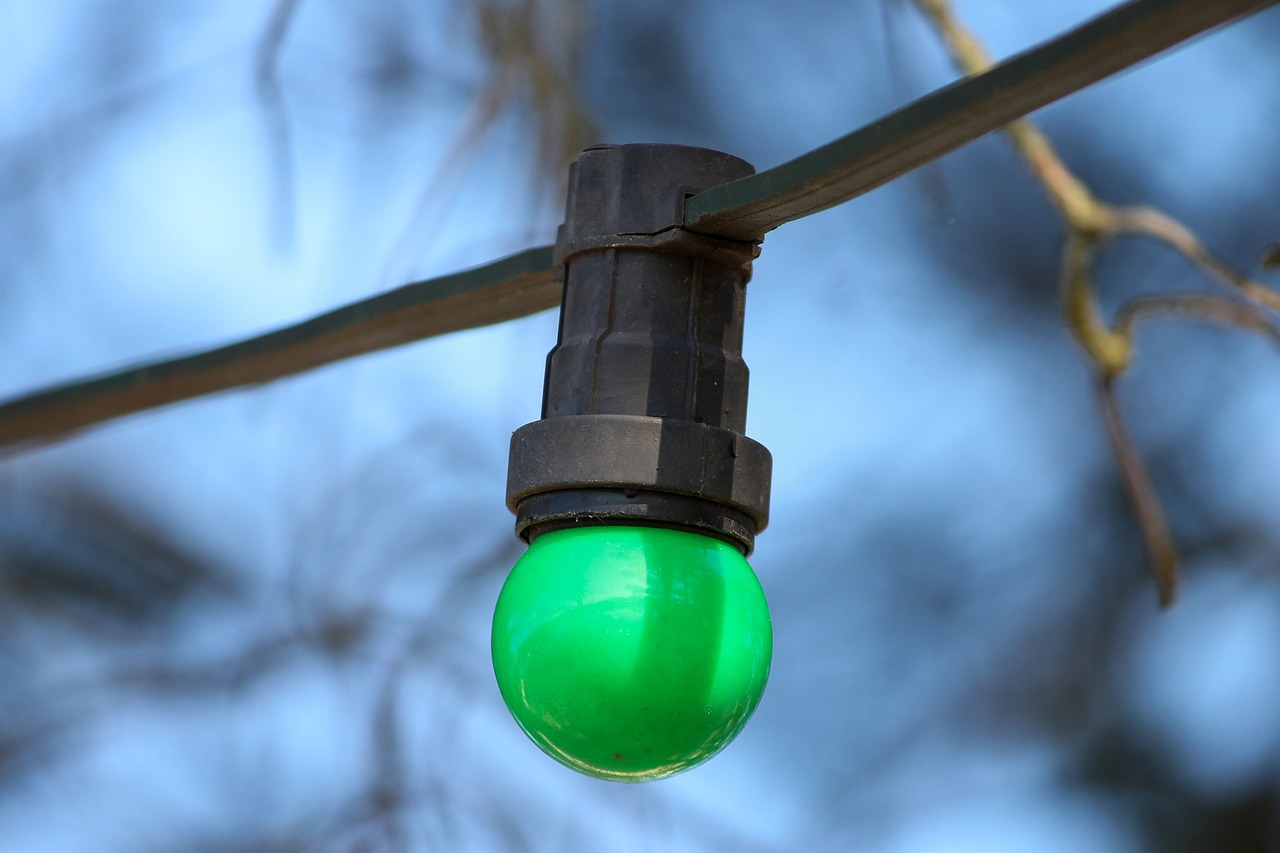Creating Miniature Fairy Gardens with Children
Creating miniature fairy gardens with children is not just a delightful activity; it's an enchanting journey that opens up a world of creativity, teamwork, and a profound love for nature. Imagine the joy on a child's face as they dig their hands into the soil, plant vibrant flowers, and arrange tiny decorations to craft their own magical realm. This hands-on experience allows children to express their imagination while learning about nature in a fun and engaging way. Have you ever thought about how something as simple as a garden can spark a child's curiosity and creativity? It's like constructing a tiny universe where fairies might just take a break from their busy lives!
As you embark on this adventure, you'll find that every step is filled with opportunities for bonding. Whether it's selecting the right container or gathering materials, each task becomes a moment of collaboration and discovery. The process encourages children to think critically and creatively, as they visualize their dream garden and bring it to life. Plus, who doesn’t love a bit of dirt and sunshine? It’s a fantastic way to get outdoors, breathe in the fresh air, and learn about the environment, all while having a blast! So, roll up your sleeves, grab your gardening gloves, and let’s dive into the magical world of fairy gardens!
Selecting the perfect container is crucial for your fairy garden. The container you choose should not only be aesthetically pleasing but also functional. Consider factors such as size, drainage, and durability. A container that is too small may restrict plant growth, while one that is too large can make it difficult for children to manage. A good rule of thumb is to choose a container that is at least 12 inches in diameter, allowing enough space for various plants and decorations.
Drainage is another important aspect. Ensure your container has holes at the bottom to allow excess water to escape, preventing root rot and other issues. You can also create a beautiful visual by selecting containers that match the theme of your fairy garden. Whether it's a rustic wooden box, a colorful ceramic pot, or even a repurposed tin can, the right container sets the stage for the magic to unfold.
Collecting materials for your fairy garden can be a fun adventure! It’s like a treasure hunt where every item you find adds to the enchantment of your miniature world. Start with the essentials: soil, plants, and decorative elements. You can use potting soil or a mixture of soil and compost to provide a healthy environment for your plants. When it comes to plants, think about incorporating a variety of textures and colors to make the garden visually appealing.
Choosing the right plants is essential for a thriving fairy garden. Here are a few types of plants that work wonderfully:
- Succulents: These low-maintenance, drought-resistant plants are perfect for fairy gardens. Their unique shapes and vibrant colors can add a whimsical touch, making them ideal for engaging children in plant care.
- Herbs: Incorporating herbs into your fairy garden not only adds beauty but also provides sensory experiences. Children can learn about different scents and uses while tending to these delightful plants.
Adding decorative elements can transform a simple garden into a magical realm. Think about incorporating fairy houses, miniature furniture, stones, and even tiny figurines. These items can spark children's imaginations and creativity, allowing them to create narratives around their fairy garden. Imagine a little fairy lounging on a tiny bench or a gnome peeking out from behind a rock! The possibilities are endless.
Creating a thoughtful layout for your fairy garden encourages children to plan and visualize their ideas. Encourage them to think about where they want to place each element and how it all fits together. This is where creativity meets strategy! Start by sketching out a rough design on paper or simply arranging items in the container before planting. This way, children can see how their ideas come to life and make adjustments as needed.
Pathways in fairy gardens can guide the eye and enhance the overall design. Learn how to create charming paths using natural materials like pebbles, sand, or even small pieces of wood. These paths not only add to the aesthetic but also invite exploration, allowing children to navigate their miniature worlds.
Establishing focal points in your fairy garden draws attention and adds interest. Choose standout features, like a unique plant or a decorative item, and position it strategically in the garden. This draws the eye and creates a sense of wonder, captivating children's imaginations and enhancing the garden's charm.
Involving children in every step of creating the fairy garden fosters a sense of ownership and pride. This section emphasizes the importance of teamwork and creativity in the gardening experience. Let them make decisions about plant selection, design, and decoration. Ask questions like, "What do you think would make this garden more magical?" or "How can we make the fairy house look cozy?" This not only boosts their confidence but also strengthens your bond as you work together towards a common goal.
By the end of this project, children will not only have a beautiful fairy garden to admire but also a deeper appreciation for nature and the joy of creating something unique. So, get ready to sprinkle some fairy dust and watch as your little ones unleash their creativity!
Q: What kind of container is best for a fairy garden?
A: Look for a container that is at least 12 inches in diameter with good drainage holes. Choose one that complements the theme of your garden.
Q: Can we use any type of plant?
A: Not all plants are suitable for fairy gardens. Opt for low-maintenance plants like succulents and herbs that thrive in smaller spaces.
Q: How can we make our fairy garden more magical?
A: Incorporate decorative elements like fairy houses, mini furniture, and colorful stones to spark imagination and creativity!

Choosing the Right Container
When it comes to creating a miniature fairy garden, selecting the perfect container is like choosing the right canvas for a masterpiece. The container not only holds your plants and decorations but also sets the stage for the entire magical experience. You want something that is not only visually appealing but also functional. So, what should you consider when picking out your fairy garden container?
First off, size matters. You’ll want to choose a container that provides enough space for your plants to grow and for your imagination to flourish. A container that is too small may restrict growth and creativity, while one that is too large might overwhelm the tiny details you want to include. Think about how many plants and decorative elements you want to incorporate. A good rule of thumb is to start with a container that is at least 12 inches in diameter.
Next, let’s talk about drainage. Plants need water, but they also need to breathe, and that’s where drainage holes come into play. Without proper drainage, your plants could end up drowning, which is the last thing you want in your enchanting little world. If your chosen container doesn’t have holes, don’t worry! You can always create a layer of small stones at the bottom to help with drainage. This simple trick can make all the difference in keeping your plants healthy and vibrant.
Now, let’s not forget about aesthetics. The container should complement the theme of your fairy garden. Are you going for a whimsical look with bright colors, or something more rustic with earthy tones? Here are a few container ideas that could spark your creativity:
- Wooden Boxes: Perfect for a rustic fairy garden feel.
- Terracotta Pots: They offer a classic look and are great for drainage.
- Old Teacups: A fun and quirky option that adds character.
- Glass Jars: Ideal for a modern twist, allowing you to see the layers of soil and plants.
Remember, the container is just the beginning of your fairy garden adventure. Once you have the right one, you can let your imagination run wild! Think about how you can decorate the outside of the container to make it even more enchanting. You could wrap it in twine, paint it with magical designs, or even glue on some tiny fairy doors. The possibilities are endless!
In conclusion, choosing the right container is a vital step in creating your miniature fairy garden. By considering size, drainage, and aesthetics, you’ll set the foundation for a delightful space that encourages creativity and imaginative play. So grab your container and let the magic unfold!

Gathering Materials
Gathering materials for your miniature fairy garden is not just a task; it’s an adventure that can ignite the imagination of both you and your children. Picture this: a sunny day, a gentle breeze, and the thrill of exploring your backyard or local park for the perfect items to bring your garden to life. This process can be as delightful as the final product, filled with laughter, creativity, and a sense of discovery. Start by collecting the essentials, which include soil, plants, and decorative items. Each of these components plays a vital role in crafting a magical space.
First and foremost, you’ll need quality soil. A good potting mix will provide the right nutrients for your plants, ensuring they thrive in their new home. When selecting soil, look for a mix that is light and well-draining, as this will help prevent overwatering—a common pitfall for novice gardeners. You can even involve your children in the process by letting them feel the texture of different soils and discussing why certain types are better for plants than others.
Next up are the plants themselves. This is where the fun truly begins! Head to your local nursery or garden center and allow your children to pick out their favorite plants. Encourage them to choose a variety of colors, shapes, and textures to create a vibrant and engaging garden. You might say, “How about we choose this bright purple flower? It will look stunning next to that lush green succulent!” This not only fosters their creativity but also teaches them about plant diversity.
In addition to soil and plants, decorative elements are crucial for transforming your garden into a whimsical fairy haven. Look for items that can add personality and charm, such as:
- Miniature fairy houses: These can be purchased or even crafted from natural materials like twigs and leaves.
- Small figurines: Fairies, animals, and gnomes can all contribute to the enchanting atmosphere.
- Unique stones or pebbles: These can serve as pathways or borders, adding structure to the garden.
- Craft supplies: Items like beads, ribbons, or seashells can be used to create personalized decorations.
Remember, the goal is to create a space that feels magical and inviting. Let your children’s imaginations run wild as they choose items that resonate with them. You might even consider hosting a mini scavenger hunt in your backyard or a nearby park to find natural materials like pinecones, acorns, or interesting sticks that can be incorporated into your fairy garden.
Ultimately, gathering materials for your fairy garden is about more than just assembling a collection of items; it’s about creating memories and bonding with your children. As you explore, discuss the significance of each item you find and how it can contribute to the overall theme of your garden. This collaborative effort will not only enhance their creativity but also instill a deeper appreciation for nature and gardening.
Q: What kind of container is best for a fairy garden?
A: Look for containers that are shallow and wide, allowing for proper drainage and space for plants to grow. Terracotta pots, wooden boxes, or even old wheelbarrows can make charming choices.
Q: Can I use artificial plants in my fairy garden?
A: Yes, artificial plants can be used, especially if you want a low-maintenance option. However, incorporating real plants can provide a sensory experience and teach children about plant care.
Q: How do I maintain my fairy garden?
A: Regular watering, occasional pruning, and replacing any dead plants will keep your fairy garden looking its best. Involve your children in this process to teach them responsibility and care for living things.
Q: Is it necessary to use fairy-themed decorations?
A: While fairy-themed items enhance the magical aspect, feel free to use any decorations that your children love. The goal is to create a space that reflects their personality and imagination.

Types of Plants
Choosing the right plants is essential for a thriving fairy garden. When you embark on this enchanting journey with your children, consider a variety of plant types that not only beautify the space but also enhance the overall design and appeal of your miniature wonderland. Think of plants as the characters in your fairy tale—each one brings its own personality and charm to the story. So, what types of plants should you consider? Let's dive into some delightful options!
First up, we have succulents. These little wonders are not just cute; they are also incredibly low-maintenance and drought-resistant. Imagine a garden where you don't have to worry about frequent watering! Succulents come in various shapes and sizes, from the rosette-like Echeveria to the trailing String of Pearls. Their unique forms and vibrant colors can add a whimsical touch, making them perfect for engaging children in plant care. Plus, they can withstand a little neglect, which is ideal for young gardeners still learning the ropes.
Next, let’s talk about herbs. Incorporating herbs into your fairy garden not only adds beauty but also provides a sensory experience for your children. They can learn about different scents and uses while tending to these delightful plants. Imagine the joy on your child's face as they pick a sprig of basil or rub their fingers over the fragrant leaves of mint. Not only do herbs smell amazing, but they can also be used in cooking, allowing for a delicious connection between the garden and the kitchen.
When selecting plants, consider a mix of both flowering plants and foliage plants. Flowering plants like pansies or miniature roses can bring bursts of color and cheer, while foliage plants like ferns or ivy add lush greenery that can create a magical backdrop. The combination of colors and textures can mimic the vibrant world of fairies, making your garden a captivating place for children to explore.
Here’s a quick overview of some suitable plants for your fairy garden:
| Plant Type | Benefits | Care Level |
|---|---|---|
| Succulents | Low-maintenance, drought-resistant | Easy |
| Herbs | Fragrant, edible, sensory experience | Moderate |
| Flowering Plants | Colorful, cheerful | Moderate |
| Foliage Plants | Lush greenery, texture | Easy to Moderate |
Incorporating a variety of plants not only makes the garden visually appealing but also encourages children to learn about different ecosystems. They can observe how plants grow, interact with one another, and even attract beneficial insects. This hands-on experience fosters a deeper appreciation for nature and its intricacies.
So, as you gather your materials for this magical project, remember that the plants you choose will play a significant role in the overall experience. They are the living elements that will thrive and change over time, just like the stories your children will create around their fairy garden. With a bit of imagination and a sprinkle of care, your fairy garden can become a vibrant, living storybook that your children will cherish for years to come.

Succulents
When it comes to creating a miniature fairy garden, are like the cherry on top of a delicious sundae. These enchanting plants are not only visually captivating with their diverse shapes and vibrant colors, but they also bring a level of low maintenance that makes them perfect for children. Imagine your little ones tending to their own tiny garden, learning about plant care without the stress of constant watering or fussing. Succulents thrive in dry conditions, which means they can withstand a bit of neglect—perfect for busy kids!
One of the most delightful aspects of succulents is their variety. You can find them in all shapes and sizes, from the plump and round Echeveria to the tall and spiky Aloe Vera. This diversity not only adds visual interest but also provides an opportunity for children to explore different textures and forms. As they choose which succulents to include, they are engaging in a creative process that fosters decision-making skills and artistic expression.
Incorporating succulents into your fairy garden can also spark conversations about nature and sustainability. You can explain to your children how these plants store water, making them a great example of adaptation in the plant kingdom. This can lead to a fun discussion about other plants and how they survive in different environments. It’s a wonderful way to combine education with creativity, all while having fun!
Here are a few popular types of succulents that are perfect for fairy gardens:
- Echeveria: Known for their rosette shape and vibrant colors, these are a favorite among gardeners.
- Jade Plant: A classic succulent that symbolizes good luck, it’s easy to care for and grows beautifully.
- Hens and Chicks: These charming plants produce small offsets, making them a fun choice for kids to watch grow.
Not only do succulents add beauty to your fairy garden, but they also provide an excellent opportunity for children to learn about responsibility and care. As they water and nurture their plants, they’ll develop a sense of pride and ownership over their miniature world. Plus, the joy of seeing their succulents thrive will encourage them to continue exploring the wonders of gardening!

Herbs
Incorporating into your fairy garden not only adds a splash of color and texture but also opens up a world of sensory experiences for children. Imagine the joy on their faces as they gently brush their fingers against the leaves of a fragrant basil or mint plant, releasing delightful aromas that fill the air. Herbs are unique in that they serve multiple purposes: they are visually appealing, they provide scents that can transport children to magical realms, and they can even be used in cooking, connecting the garden to the kitchen in a delightful way.
When choosing herbs for your fairy garden, consider a mix of colors, shapes, and scents. Some popular choices include:
- Basil: This vibrant green herb not only looks stunning but also has a sweet, peppery aroma that kids will love.
- Mint: With its refreshing scent, mint is a favorite among children. Plus, it grows quickly and can be used in delicious recipes!
- Thyme: This low-growing herb is perfect for creating a lush carpet in your garden. Its tiny leaves and delicate flowers add charm and beauty.
- Lavender: Known for its calming fragrance, lavender can introduce children to the concept of aromatherapy, all while providing a lovely purple hue to the garden.
Not only do herbs enhance the visual appeal of your fairy garden, but they also offer educational opportunities. As children care for their plants, they can learn about how herbs grow, their uses in cooking, and how they attract beneficial insects like bees and butterflies. This hands-on experience fosters a love for nature and encourages children to explore the outdoors.
To make the most of your herb garden, consider creating small labels for each plant. This not only helps children learn the names of the herbs but also adds a whimsical touch to the overall design. You could use small stones or wooden sticks, painting or writing the names of the herbs on them. This simple activity can spark creativity and give children a sense of ownership over their garden.
Ultimately, herbs are a fantastic addition to any fairy garden. They provide a feast for the senses, encourage learning, and can even be used in family cooking adventures. By engaging children in the process of planting and caring for these delightful plants, you’re paving the way for a lifelong appreciation of gardening and nature.
Q: Can I grow herbs indoors for my fairy garden?
A: Absolutely! Many herbs thrive indoors as long as they receive adequate sunlight. Consider using small pots or containers that fit your fairy garden theme.
Q: How often should I water the herbs?
A: The watering needs depend on the type of herb and the environment. Generally, herbs prefer slightly dry soil, so it's best to water them when the top inch of soil feels dry to the touch.
Q: Are there any herbs that are safe for children to taste?
A: Yes! Many herbs like basil, mint, and parsley are safe and can be used in cooking or enjoyed fresh. Always supervise children when tasting new plants to ensure they are safe.

Decorative Elements
This article explores the delightful process of crafting miniature fairy gardens with children, fostering creativity, teamwork, and a love for nature through imaginative play and hands-on activities.
Selecting the perfect container is crucial for your fairy garden. Consider factors like size, drainage, and aesthetics to create an enchanting space that inspires creativity and imagination in children.
Collecting materials for your fairy garden can be a fun adventure. From soil and plants to decorative items like stones and miniature figures, this section highlights what you need to get started.
Choosing the right plants is essential for a thriving fairy garden. Explore various plant types that are suitable for miniature gardens and how they can enhance the overall design and appeal.
Succulents are low-maintenance, drought-resistant plants perfect for fairy gardens. Their unique shapes and colors can add a whimsical touch, making them ideal for engaging children in plant care.
Incorporating herbs into your fairy garden not only adds beauty but also provides sensory experiences. Children can learn about different scents and uses while tending to these delightful plants.
Adding decorative elements can transform a simple garden into a magical realm. Think of your fairy garden as a canvas where imagination knows no bounds. You can use a variety of decorative items that will not only enhance the visual appeal but also spark children's creativity. Consider using fairy houses, which serve as charming abodes for the tiny inhabitants of your garden. These can be made from natural materials like twigs, leaves, or even small pebbles, allowing children to connect with nature while crafting.
Moreover, miniature furniture like tiny benches, tables, and swings can create a whimsical atmosphere. Imagine a little fairy lounging on a bench, sipping nectar from a flower! You can also incorporate decorative stones and crystals that catch the sunlight, adding a touch of sparkle to the garden. Don't forget about the pathways; using small stones or gravel can guide visitors through this enchanting space, making it feel as though they are stepping into a fairy tale.
To help you visualize the possibilities, here’s a quick overview of some popular decorative elements you might consider:
| Decorative Element | Description |
|---|---|
| Fairy Houses | Miniature homes made from natural materials, perfect for creating a whimsical atmosphere. |
| Miniature Furniture | Tiny benches, tables, and swings that add charm and encourage imaginative play. |
| Decorative Stones | Colorful stones and crystals that enhance the aesthetic and add sparkle. |
| Pathways | Small stones or gravel that guide the eye and create a sense of exploration. |
Ultimately, the decorative elements you choose should reflect your children's personalities and interests. Encourage them to pick out items that resonate with them, whether it's a tiny dragon figurine or a colorful mushroom. This personal touch not only makes the garden more special but also deepens their connection to the project. Remember, the goal is to create an enchanting space where imagination can run wild!
Creating a thoughtful layout for your fairy garden encourages children to plan and visualize their ideas. This section offers tips on arranging plants and decorations for an enchanting aesthetic.
Pathways in fairy gardens can guide the eye and enhance the overall design. Learn how to create charming paths using natural materials, allowing children to explore and navigate their miniature worlds.
Establishing focal points in your fairy garden draws attention and adds interest. Discover how to choose and position standout features that will captivate children's imaginations and enhance the garden's charm.
Involving children in every step of creating the fairy garden fosters a sense of ownership and pride. This section emphasizes the importance of teamwork and creativity in the gardening experience.
- What materials do I need to start a fairy garden? You will need a container, soil, plants, and decorative elements like fairy houses and stones.
- Can I use any type of plant in my fairy garden? It's best to choose plants that are small and suitable for containers, like succulents or herbs.
- How can I make my fairy garden more magical? Incorporate unique decorative elements and encourage your children to add their personal touches!
- Is creating a fairy garden a good activity for kids? Absolutely! It fosters creativity, teamwork, and a love for nature.

Designing the Layout
Creating a thoughtful layout for your fairy garden is like painting a masterpiece; it requires a blend of imagination, planning, and a sprinkle of magic. The layout serves as the foundation of your garden, guiding the eye and inviting exploration. When you involve children in this process, you’re not just building a garden; you’re fostering their creativity and allowing them to visualize their ideas. Start by selecting a central theme or story for your garden. Will it be a mystical forest, a sunny meadow, or perhaps a whimsical village? This theme will help dictate the arrangement of plants and decorations, making it easier for kids to connect with their creation.
As you begin to design the layout, consider the **scale** of your garden. A larger container allows for more elaborate designs, while a smaller one may require more careful planning to avoid overcrowding. It’s essential to leave enough space for each element to shine. When arranging plants and decorations, think about the **height** and **texture** of each item. Taller plants should be placed at the back of the garden, while shorter ones can take the front row. This not only creates depth but also ensures that every part of the garden is visible and appreciated.
One effective technique is to create **focal points** that draw the eye. These could be unique decorations, such as a charming fairy house or a sparkling pond made from glass beads. Position these standout features strategically within the layout to create visual interest. For example, if you have a small fairy house, placing it near a cluster of colorful flowers can create an enchanting scene that encourages children to imagine stories about the fairies that might live there.
Another important aspect of layout design is incorporating **pathways**. Pathways guide the viewer through the garden, creating a sense of adventure and exploration. You can easily create charming paths using natural materials like small pebbles, twigs, or even bark. Encourage children to think about how the pathways will connect different areas of the garden, leading from one magical spot to another. This not only adds an element of fun but also teaches them about planning and organization.
Lastly, don’t forget to leave room for **imagination**. While it’s great to have a plan, the beauty of a fairy garden lies in its ability to evolve. Children may come up with spontaneous ideas for new decorations or plants to add, and that’s perfectly fine! Encourage them to embrace their creativity and allow the garden to grow and change over time. After all, every great fairy tale has its twists and turns, and your garden should reflect that enchanting unpredictability.
Q: What size container should I choose for a fairy garden?
A: The size of the container depends on how elaborate you want your garden to be. A larger container allows for more plants and decorations, while a smaller one is easier to manage for beginners.
Q: Can I use real plants in my fairy garden?
A: Absolutely! Using real plants adds life and color to your fairy garden. Just ensure they are suitable for the container size and climate conditions.
Q: How can I make my fairy garden unique?
A: Personalize your fairy garden by incorporating items that reflect your child's interests, such as specific colors, themes, or favorite characters. Let their creativity shine!
Q: Is it okay to change the layout once the garden is set up?
A: Yes! One of the joys of a fairy garden is that it can evolve. Feel free to rearrange plants and decorations as new ideas come to mind.

Incorporating Pathways
When it comes to designing a miniature fairy garden, pathways are not just practical; they are a vital element that adds charm and intrigue to the overall design. Imagine a tiny path winding through a lush landscape, guiding the eye and inviting exploration. Incorporating pathways allows children to visualize their fairy garden as a magical world, sparking their imagination and creativity. You can create these enchanting paths using various natural materials, such as pebbles, sand, or even small twigs. This hands-on activity not only enhances the aesthetic appeal but also provides a wonderful opportunity for children to engage with nature.
As you plan your pathways, consider the overall layout of the garden. Think of the pathways as the veins of your garden, connecting different elements and creating a sense of flow. For instance, a path can lead from a fairy house to a tiny pond or a cluster of vibrant flowers. This not only makes the garden visually appealing but also encourages children to think critically about how different components interact within their miniature world.
Here are some tips to consider when incorporating pathways into your fairy garden:
- Use Natural Materials: Gather materials from your backyard or local park. Stones, bark, and sand can create a rustic feel that blends seamlessly with the garden.
- Vary the Width: Paths don’t have to be uniform. Varying the width can create a more organic and whimsical appearance, making it feel like a real fairy realm.
- Add Curves: Straight paths can be boring. Incorporate gentle curves to make the journey through the garden feel more adventurous.
Another fun idea is to include miniature stepping stones. You can use flat pebbles or even painted stones to create a whimsical stepping path. This not only adds to the visual appeal but also gives children a hands-on project they can take pride in. They can paint the stones with different colors or designs, turning each stone into a unique piece of art that reflects their personality.
Lastly, don’t forget to encourage your children to think about the functionality of the pathways. Ask them questions like, “Where do you think the fairies would want to go?” or “What kind of adventures could happen along this path?” This fosters a sense of ownership and deepens their connection to the project. By involving them in the process of creating pathways, you’re not just decorating; you’re building a story, a narrative that they can carry on in their imaginative play.
Q: What materials are best for creating pathways in a fairy garden?
A: Natural materials like pebbles, sand, bark, and small twigs work wonderfully. You can also use painted stones for a more personalized touch.
Q: How can I make the pathways more engaging for children?
A: Encourage children to design their pathways with curves and varying widths. Adding miniature stepping stones or decorations along the path can also enhance the experience.
Q: Can I change the pathways later on?
A: Absolutely! One of the joys of a fairy garden is its ever-evolving nature. Feel free to rearrange or add new pathways as your children’s ideas and imaginations grow.

Creating Focal Points
Establishing focal points in your fairy garden is like adding the cherry on top of a delicious sundae—it draws the eye and adds an element of surprise that can truly captivate both children and adults alike. Think of a focal point as the star of your miniature garden; it’s that one element that makes everyone go, “Wow!” Whether it’s a whimsical fairy house, a sparkling pond, or a unique sculpture, the right focal point can transform your garden from ordinary to extraordinary.
When selecting a focal point, consider what will resonate with your child’s imagination. Ask them questions like, “What do you think a fairy would love to have in their garden?” This not only engages them in the creative process but also helps you discover their unique vision. Here are some popular ideas for focal points that are sure to ignite creativity:
- Fairy Houses: These can be made from natural materials like twigs, leaves, or even small pots. A charming fairy house creates a sense of wonder and invites storytelling.
- Miniature Bridges: Adding a tiny bridge over a small stream or pathway can create a magical transition point in the garden.
- Decorative Statues: Whether it’s a gnome, a dragon, or a whimsical creature, statues can add personality and character to the garden.
- Water Features: A small birdbath or a tiny pond can serve as a refreshing focal point, attracting not just fairies but also real-life butterflies and birds!
Positioning your focal point is just as crucial as choosing it. Ideally, it should be placed where it can be easily seen and appreciated. Think about how children interact with their environment; they often look for things that are at their eye level. Therefore, placing the focal point slightly elevated or in a central location can make a significant difference. You might even want to create a little seating area around it, using small stones or logs, to encourage kids to sit and enjoy the view.
Another fun idea is to create a thematic focal point. For example, if your child loves the ocean, consider a seaside theme with shells, miniature boats, and a blue-tinted pond. This not only enhances the visual appeal but also allows for educational opportunities, like discussing marine life or environmental conservation.
Finally, don’t forget that focal points can evolve over time. As your child grows and their interests change, so can your fairy garden. You can swap out elements, add new decorations, or even change the entire theme to keep the magic alive. The beauty of a fairy garden is that it’s a living, breathing project that can grow and change just like your child’s imagination.
Q: What is the best material for a fairy house?
A: Natural materials like twigs, leaves, and stones work wonderfully. You can also use small pots or even craft supplies like cardboard and paint.
Q: How do I keep my fairy garden healthy?
A: Ensure your plants have proper drainage, water them regularly, and remove any dead leaves or debris to keep the garden looking its best.
Q: Can we add lights to our fairy garden?
A: Absolutely! Tiny solar lights or fairy lights can add a magical glow to your garden, especially in the evening.
Q: How often should we change the focal point?
A: There’s no set rule! You can change it whenever you feel inspired, or as your child’s interests evolve.

Engaging Children in the Process
Engaging children in the process of creating a miniature fairy garden is not just about gardening; it's about igniting their imaginations and fostering a sense of ownership and pride in their work. When children participate in hands-on activities, they learn valuable skills, develop teamwork, and cultivate a love for nature. Imagine the joy on their faces as they dig their hands into the soil, planting tiny seeds or arranging vibrant flowers! This experience can be both educational and fun, creating lasting memories.
One of the best ways to engage children is to involve them in every step of the process. Start by letting them choose the container for the fairy garden. This simple decision can spark their creativity, as they imagine what kind of magical world they want to create. Encourage them to think about what size and shape would best suit their vision. Once the container is selected, gather all the materials together, allowing the kids to help with the collection. This can turn into a delightful adventure, where they can explore the garden or local park to find unique stones, twigs, and other natural decorations.
As you gather materials, take the opportunity to teach children about different types of plants and their needs. Discuss the importance of sunlight, water, and soil quality. You can even create a fun little game where you quiz them on which plants are best suited for their fairy garden. This not only keeps them engaged but also makes learning about botany exciting!
When it comes to designing the layout, encourage children to express their ideas freely. Ask open-ended questions like, "What do you think would look good next to the fairy house?" or "How can we create a magical pathway?" This type of dialogue fosters critical thinking and allows them to visualize their dream garden. You might even consider sketching out their ideas on paper before planting. This way, they can see their vision come to life, which adds to the excitement.
Incorporating play into the process is also essential. As you work on the garden, share stories about fairies and magical creatures. Let the children create their own fairy tales that can unfold in the garden. For example, they might decide that a particular stone is a magical portal or that a specific plant is a fairy's favorite resting spot. This imaginative play not only makes the activity more enjoyable but also deepens their connection to nature.
Finally, celebrate the completion of the fairy garden! Organize a small "opening ceremony" where everyone can admire the hard work and creativity that went into the project. You could even invite friends or family over to showcase the enchanting space. This not only boosts the children's confidence but also highlights the importance of teamwork and collaboration. Remember, the goal is to create a magical experience that children will cherish and remember for years to come!
- What materials do I need to create a fairy garden? You will need a container, soil, plants, and decorative items like stones, miniature figures, and fairy houses.
- Can I use any type of plant in a fairy garden? While you can use various plants, it's best to choose low-maintenance options like succulents and herbs that thrive in small spaces.
- How can I make the fairy garden engaging for my child? Involve them in every step, from choosing the container to designing the layout, and encourage imaginative play while gardening.
- Is creating a fairy garden suitable for all ages? Yes! Children of all ages can participate, though younger kids may need more guidance and supervision.
Frequently Asked Questions
- What materials do I need to create a fairy garden with my children?
To get started on your enchanting fairy garden, you'll need a variety of materials. Essential items include a suitable container, potting soil, plants (like succulents or herbs), and decorative elements such as miniature figures, stones, and fairy houses. Gather these together, and you're ready for a fun-filled creative adventure!
- How do I choose the right container for my fairy garden?
Selecting the perfect container is key to a successful fairy garden. Look for something that suits the size of your space and has proper drainage to keep your plants healthy. Whether it’s a charming pot, an old wheelbarrow, or even a wooden crate, make sure it sparks joy and imagination for your children!
- Can I use any type of plant in my fairy garden?
While you can technically use any plant, it's best to choose those that thrive in smaller spaces. Succulents and herbs are fantastic options! They not only require minimal care but also come in various shapes and colors, making them perfect for engaging kids and creating a whimsical atmosphere.
- How do I design the layout of my fairy garden?
Designing your fairy garden layout can be a fun and creative process! Encourage your children to visualize their ideas and plan the placement of plants and decorations. Consider incorporating pathways to guide the eye and creating focal points to draw attention. This way, every corner of the garden tells a story!
- What are some fun decorative elements to include?
To transform your garden into a magical realm, think about adding elements like fairy houses, miniature furniture, and whimsical pathways. You can even use natural materials like twigs and stones to craft unique features. Let your children's imaginations run wild as they choose what to include!
- How can I engage my children in the gardening process?
Involve your children in every step of creating the fairy garden! From choosing materials to planting and arranging decorations, teamwork fosters a sense of ownership and pride. Encourage them to share their ideas and make decisions, turning the gardening experience into a delightful bonding activity.



















